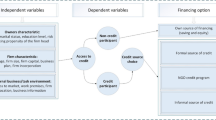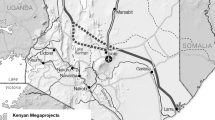Abstract
The strategies of participants in housing production, in developing countries, are diverse and not fully understood. Governments in most developing countries have not been able to, sufficiently, explore how the production factors: land, labour and capital, impact on housing production. As a result, many policies formulated by governments aimed at stimulating housing production are found to result in unintended outcomes: they do not always align with the way housing is actually created. This study uses the production factors to assess how motivations are shaped and different modes of housing production result. The aim is to gain an improved understanding of how housing developers, builders and government, impact modes of production. The method includes synthesis of past studies on factors of housing production in Lagos. In parallel, it also involves visits and interviews with some selected developers and agencies to allow a deeper engagement with their activities. This is in addition to direct observation and interviews undertaken through purposeful selection of some autonomous (on-site) builders. As an exploratory study, it observes that a better approach to land supply is significantly beneficial in shaping the modes and capacity of housing. The study helps understand the strategies of participants in housing production in developing countries, especially in Lagos. It recommends that efficient land supply to the autonomous on-site builders should be a focus for policy makers. This will contribute to the production of more housing thereby facilitating an improved production of present and future housing needs of the population.




Similar content being viewed by others
Notes
These are individual developers or builders motivated to develop dwellings in the form of both asset formation and housing services for their exclusive use.
These are people who invest in and develop the urban or suburban potentialities of real estate, especially by subdividing the land into lots. They might also be involved in the actual construction and sale of houses (organised sector of housing production). It is contextually synonymous with builder in most informal settlements that are predominantly autonomous self built in developing countries depending on the scale and motive of construction.
Contractors are builders that are directly involved in the physical construction and the coordination of all the factors of housing construction.
References
Adams, C. D. (2005). Urban planning and the development process. London, New York: Routledge.
Adeola, B. (2006). Imperatives for mass housing in Lagos State—The LSDPC medium income housing approach. Paper presented at the 2000 annual conference and AGM of the association of consulting engineers, Nigeria (ACEN).
Adeola, B. (2008). Our collective responsibility: Ogun State. Regional development strategy. Lagos: Comprehensive Project Management Services.
Agbola, T. (1988). The housing construction process in Nigeria: Implications for urban growth and development. Cities, 5(2), 184–192.
Agbola, T. (1990). Affordability and cost recovery in shelter projects: The case of Nigeria. Third World Planning Review, 12(1), 59–73.
Ahmad, A. M. (1989). Housing submarkets for the urban poor—The case of Greater Khartoum, the Sudan. Environment and Urbanization, 1(2), 50–59.
Aina, T. A. (1988). The construction of housing for the urban poor of Lagos. Habitat International, 12(1), 31–48.
Baken, R. J., & Van der Linden, J. (1993). ‘Getting the Incentives Right’: Banking on the formal private sector (HIS Working Paper Series No. 5).
Baker, K. (2003). Review of housing supply interim report—Analysis. Retrieved from http://image.guardian.co.uk/sys-files/Guardian/documents/2004/03/17/Barker.pdf.
Bryman, A. (2004). Social research methods. Oxford: Oxford University Press.
Egbu, A. U., Olomolaiye, P., & Gameson, R. (2008). A neo-institutional economic critique of the system for allocating urban land and development rights in Nigeria. Habitat International, 32(1), 121–135.
Hamdi, N. (1995). Housing without houses: Participation, flexibility, enablement. Intermediate Technology Publications.
Ikejiofor, U. (1997). The private sector and urban housing production process in Nigeria: A study of small-scale landlords in Abuja. Habitat International, 21(4), 409–425.
Israel, A. (1990). The changing role of the state: Institutional dimensions. Washington: World Bank.
Keivani, R., & Wernab, E. (2001). Modes of housing provision in developing countries. Progress in Planning, 55, 65–118.
Lagos State Government. (2006). Lagos state regional plan review. Lagos: Ministry of Physical Planning and Urban Development.
Mathema, A. (2008). Slums and sprawl in Lagos: The unintended consequence of ‘Well-Intended’ regulation.
Ogu, V. I., & Ogbuozobe, J. E. (2001). Housing policy in Nigeria: Towards enablement of private housing development. Habitat International, 25(2001), 473–492.
Okpala, D. C., Aniekwu, A. N. (1988). Causes of high costs of construction in Nigeria. Journal of Construction Engineering, 114(2), 233–244.
Olokesusi, O., & Okufolure, A. (Eds.). (2001). An overview of factors influencing the pace of building starts in Nigeria. A Publication of Federal Ministry of Works & Housing and NISER-2001.
Olumide, O., & Adelore, C. (2005). New concepts for sustainable housing delivery. University of Lagos. Retrieved from www.unilag.edu.ng/publication/opendoc.php?sno=1786&doctype=doc&docname=$.
Omirin, M., & Antwi, A. (2004). Informality, illegality and market inefficiency: A case for land market deregulation in Accra and Lagos. Retrieved from http://www.rics.org/site/download_feed.aspx?fileID=2524&fileExtension=PDF.
Omirin, M. M., & Nubi, T. G. (2007). Role of primary mortgage institutions in housing delivery. The Housing Finance International, 22(1), 52–56.
Onibokun, A. G. (1983). Issues in Nigerian housing. Ibadan: NISER.
Onibokun, A. G. (2003). The problem of housing construction in Nigeria. Ibadan: University of Ibadan Press.
Pugh, C. (1994). Housing policy development in developing countries: The World Bank and internationalization 1972–93. Cities, 11(1), 159–180.
Turner, J. C., & Fichter, R. (Eds.). (1972). Freedom to build. New York: Macmillan.
Udegbe, M. I. (2005). Labour force output on plastering activities in Edo State. The professional builders. Journal of the Nigerian Institute of Builders, 1(7), 34–41.
UNCHS. (1990, 12 April, 2011). Global strategy for shelter to the year 2000. from http://www.greenstone.org/greenstone3/nzdl;jsessionid=105317B3376228F652AEF587C9147CC6?a=d&c=cdl&d=HASH01a05fd0c88aea02668205ab&dt=hierarchy&p.a=b&p.s=ClassifierBrowse.
UNCHS. (1991). Assessment of experience with the project approach to shelter delivery for the poor United Nations Centre for human settlements Habitat.
UN-HABITAT. (2003). The challenge of slums—Global report on human settlements 2003. London, Sterling, VA: Earthscan Publications.
UN-HABITAT. (2010). A practical guide for conducting: Housing profiles-supporting evidence-based housing policy and reform UNON. Nairobi: Publishing Services Section.
Walley, S. (2008). Nigeria financial system strategy 2020: Housing finance; strengthening financial sectors. First Initiative.
Wood, G., & Ong, R. (2010). Western Australia Research Centre factors shaping the decision to become a landlord and retain rental investments for the Australian AHURI Final Report No. 142. Retrieved from http://www.melbourneinstitute.com/downloads/hilda/Bibliography/Other_Publications/Wood_etal_Factors_shaping_the_decision_to_become_a_landlord_and_retain_rental_investments.pdf.
World Bank. (1988). World development report 1988. New York: Oxford University Press for the World Bank.
World Bank. (1993). Housing: Enabling markets to work. Washington, DC: World Bank.
Yeboah, I. E. (2005). Housing the urban poor in twenty-first century Sub-Saharan Africa: Policy mismatch and a way forward for Ghana. GeoJournal, 62, 147–161.
Acknowledgments
The authors would like to acknowledge the supports provided by the Australian Research Council through a linkage project on National Infrastructure for Managing Land Information (NIMLI) and with the collaboration of the industry partners: Land Victoria, Land and Property Management Authority, New South Wales, Landgate—Western Australia and PSMA. Also acknowledged are the constructive comments from members of CSDILA and the supports from the University of Lagos at the early stage of the research. However, the views presented are those of the authors and not of the project partners.
Author information
Authors and Affiliations
Corresponding author
Rights and permissions
About this article
Cite this article
Agunbiade, M., Rajabifard, A. & Bennett, R. Modes of housing production in developing countries: the contemporary role of land, labour, and capital in Lagos, Nigeria. J Hous and the Built Environ 28, 363–379 (2013). https://doi.org/10.1007/s10901-012-9303-8
Received:
Accepted:
Published:
Issue Date:
DOI: https://doi.org/10.1007/s10901-012-9303-8




